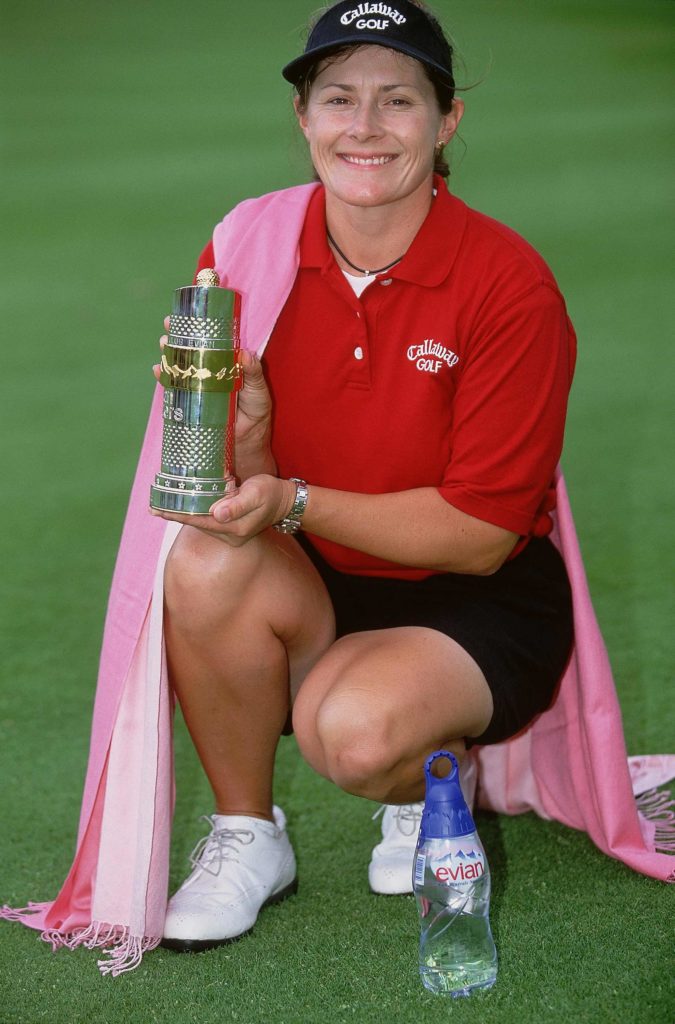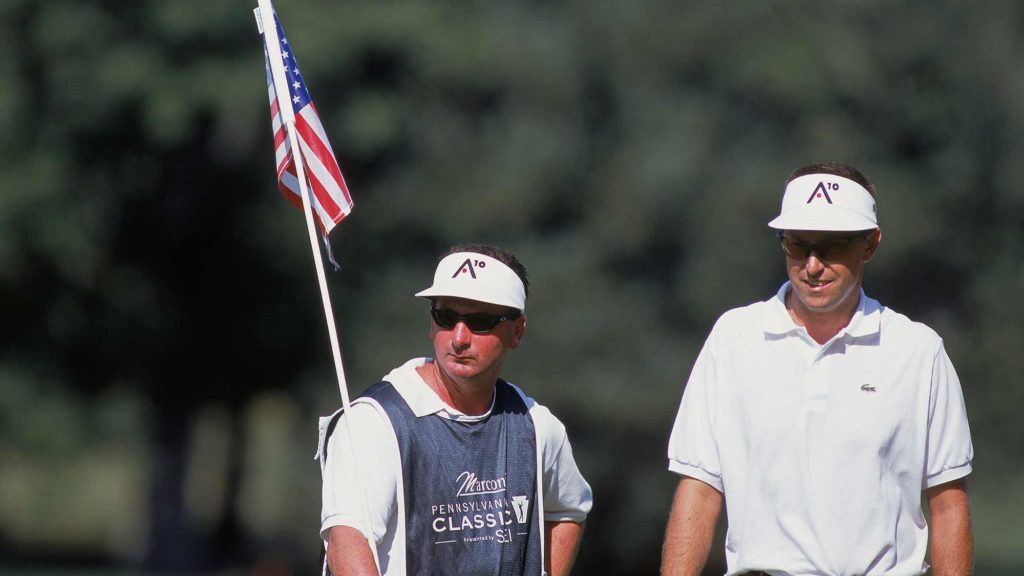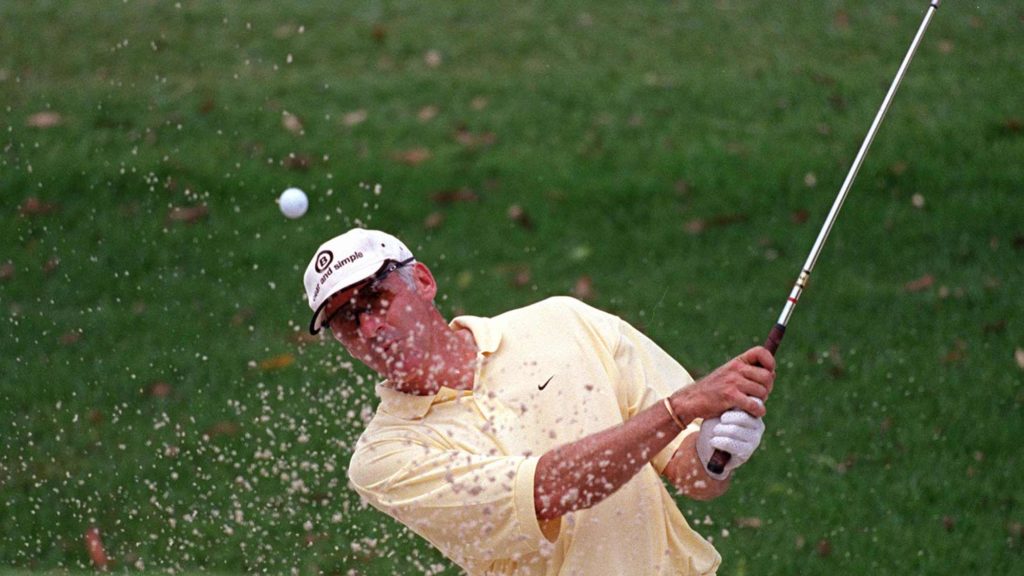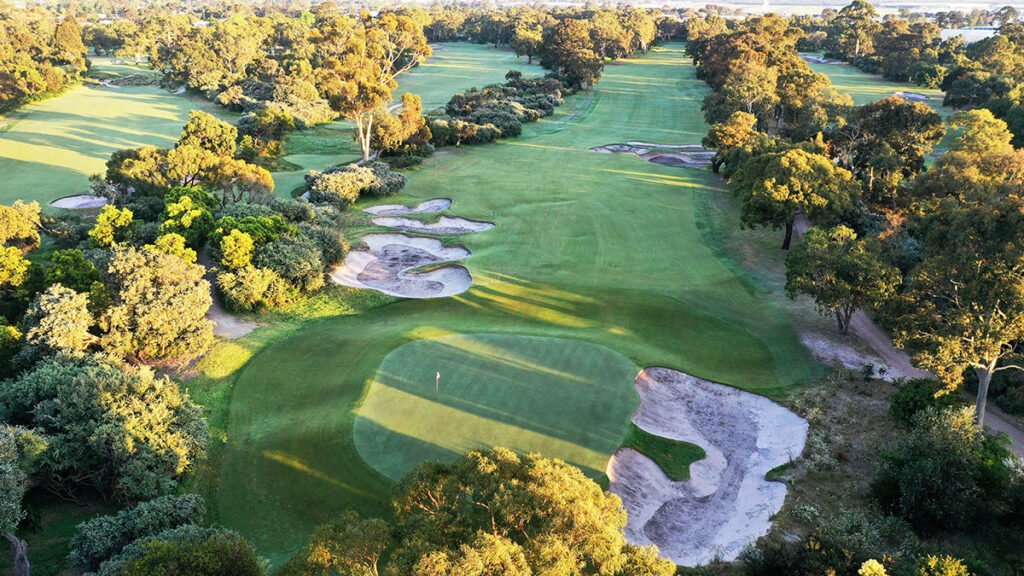On September 11, 2001, the world changed forever. Twenty years on, seven Australian golfers reflect on where they were when New York’s World Trade Center was attacked and how it affected their careers and their lives.
It was at 8:46 on the morning of Tuesday, September 11, 2001, when American Airlines Flight 11 crashed through the North Tower of the World Trade Center in New York.
Seventeen minutes later – an excruciating 17 minutes when confusion and terror gripped the world – Delta Airlines Flight 175 plunged into the South Tower on live TV.
It was at this point that the awareness of what was unfolding sent shockwaves to every corner of the planet where Aussie golfers far from home were suddenly faced with a reality they could never have imagined.
Portland, Oregon – 5:46am
Playing predominantly on the Ladies European Tour at the time, Karen Lunn flew into the United States on Sunday, September 9, to spend time with her mother and to caddie for her sister Mardi on the LPGA Tour. Mardi was one of seven Australians who had played the Williams Championship in Oklahoma the week prior before making her way to Portland for the Safeway Classic.
The Lunns spent the Monday playing a practice round at Columbia Edgewater Country Club. The next morning, as Karen loosened up with a morning swim in the hotel pool, “all hell broke loose”.
“Mardi came down and got me and told me to come and have a look at what was going on,” Karen recalls. “A friend of mine was in New York at the time and I was desperately trying to get in contact with him. It took me a couple of days in the end. He was an insurance broker, but thank goodness he was a few blocks away at the time and was absolutely fine.
“There were a lot of people flying places and you couldn’t track them down. The American girls were very, very freaked out by the whole thing. There was a lot of uncertainty as to who was where and who was travelling in the air. There was a lot of concern about people’s families and friends.”
Discussions took place on the Tuesday afternoon before it was decided to cancel the tournament, the tour and major sponsor Safeway making provisions to charter a plane the following Monday to the next event in Georgia.
It was then that the uncomfortable reality of life on tour came starkly into view, as one of the flight crew was of Middle Eastern appearance.
“Travelling commercially after that was challenging because it was so stressful and time-consuming. And people were fearful,” Lunn says. “You could see people racial-profiling everyone who got on a flight. I was probably guilty of that too. It was terrible to think what you thought of people,
but it just had such a profound effect
on everyone.
“It gets into your psyche a little bit; you’re thinking that this could happen to anyone at any time. That was the really scary part of it.”
Winner of the Evian Masters only three months earlier, Rachel Hetherington also vividly remembers that first flight out of Portland and how September 11 impacted her career from that day forward. Hetherington, whose brother was with her at that time and would go on to serve in Afghanistan and Iraq with the Australian Army, says perceptions changed instantly.
“At that time, with that fear, you were looking at people differently… and we didn’t want to be looking at people differently,” she says. “It wasn’t a choice, it was the environment we were suddenly in because of the attacks that occurred. It was such a conflicting time because you were fearful and afraid.
“Travel was such a big part of our lives and that really affected me. From that point onwards, the travelling part of golf was not fun for me.
“It changed the focus of the western world and it is still changing lives to this day. We have Defence Force people taking their lives today because of their experiences in Afghanistan and Iraq. Twenty years on, what happened on that day, we still see repercussions from it. The consequences from that one day will go on forever.”

St Louis, Missouri – 7:46am
After finishing tied for eighth at the Bell Canadian Open, Robert Allenby flew to Washington DC to attend a dinner at the Australian Ambassador’s house where guests included Australian Prime Minister John Howard, US Secretary of State Colin Powell, US Secretary of Defense Donald Rumsfeld and US Vice-President Dick Cheney.
“I was on their table,” Allenby says. “Who would have thought two days later that they would all have to bunker themselves in and try to figure out how to put a stop to what was happening in the world.”
The next morning, Allenby flew into St Louis in Missouri for the WGC–American Express Championship. He and Stuart Appleby were driving to Bellerive Country Club on the Tuesday morning when the local radio station brought them the news of what had happened in New York.
“We were all sitting there in despair thinking, What the f–k is going on here?” Allenby remembers. “Everyone was in shock. And when they finally got every aeroplane out of the sky, that’s when you knew it was over. But then you were living on edge just knowing that if they’ve done it once they can do it twice. And they could do something else.”
After spending the week in St Louis despite the cancellation of the tournament, Allenby’s private plane was the first in the sky that Sunday night as he and his family flew to Pennsylvania for the Marconi Pennsylvania Classic, a tournament he would go on to win.
“They had two fighter jets follow us because ours was the first plane in the sky. They wanted to make sure that everything was safe and that we didn’t deviate,” Allenby says. “Once you took off and got your flight plan, you couldn’t move from it. You had to stay on course, no matter what. Even if you went through the worst cloud in the world, you had to stay straight.
“I was fortunate that the two pilots I had were ex-fighter pilots so they were like, ‘We could manoeuvre outside of these guys,’ and I said, ‘Let’s not try that.’
“My wife, Kim, some of her girlfriends lost their husbands in those buildings. One of the girls who I had met a few times, she was pregnant at the time so that little girl never got to see her father. That day affected America very deeply.”
Orlando, Florida – 8:46am
Like Allenby, Paul Gow had enjoyed a strong showing at the Canadian Open, finishing in a tie for fifth having been runner-up at the BC Open seven weeks earlier, his best finish on the PGA Tour.
Back home in Florida, Gow and wife Cherie were driving the 45 minutes from their home in Titusville to go house-hunting in Orlando. When they too heard on the radio what had happened the Gows made the snap decision to divert to Tripp Isenhour’s house instead.
“We drove straight to Tripp Isenhour’s house in Orlando and got there to watch the second plane go into the Twin Towers,” Gow remembers. “They were all terribly upset and we had to make a decision to try to get out of there and get back to Australia. We thought the world was coming to an end.”
Gow explored all manner of ways to firstly get to Los Angeles so he and his family could get the first available flight back to Sydney, but had to stay put in Titusville until planes were once again in the air.
“The first impulse was to just get home. We felt it was safer in Australia than anywhere else,” he says.
After spending three weeks in Sydney, Gow returned to America to finish the season, leaving behind his wife, six-month-old daughter and any real hope of playing to his potential.
“I played pretty badly when I got back because it was still an eerie feeling living there,” says Gow, who missed two cuts and withdrew after shooting 77 in the opening round of the Buick Challenge before returning to Australia.
“You just didn’t know what was going to go on, whether there were going to be more bombings, how it was all going to operate. It was a pretty scary place, to be honest with you.
“Everyone was very wary. I remember jumping on the first flight back from LA to Vegas, that little ‘puddle jumper’, and it was really weird. And Vegas was a ghost town.
“The world had changed. From the way you travelled, all the security, and then security at a tour event was up, big time. We just didn’t know what was going to happen next. You can have all the security in the world, but you didn’t know what these people were capable of.”

London, England – 1:46pm
Taking advantage of a week off on the European Tour, West Australian Stephen Leaney and wife Tracy had travelled into London from their home in Camberley on the morning of September 11. It wasn’t until they returned home that afternoon that they became aware of the events in the US.
“We saw what had happened on TV and were in shock just like everybody else,” Leaney recalls. Londoners lived on tenterhooks for the days that followed, fearful that their city would be next. But it was when the Leaneys travelled to France the next week for the Trophee Lancome tournament that the new way of the world came starkly into view.
“The biggest thing for us was getting on that plane for the first time,” Leaney says. “We were very apprehensive about getting on. I know my wife and I discussed it at length before we were about to board.
“Driving into Heathrow and checking in – it’s a horrible thing to say – but suddenly you noticed people that you didn’t notice before because of their ethnic background. That’s just the way it was. There were at least four or five people who didn’t board our airplane because of the people they saw getting on that plane. That’s how scared everyone was.
“Everything changed from that day forward.”
Seoul, South Korea – 9:46pm
Kim Felton had flown in from Europe; Wayne Smith was in Taiwan the week prior playing the Mercuries Masters. The two West Australians were in South Korea for the Kolon Korea Open and ventured out to dinner on the Tuesday night at the Nashville Bar, a nightspot located in a shopping precinct adjacent to the US military base in Seoul.
Given that the bar’s clientele were predominantly US military personnel, westerners could request movies be played on the TVs, but when Felton, Smith and one other player entered the bar there was not another soul in the joint.
“We’re eating, having a beer, chatting, then all of a sudden one of the waitresses came over to us, thinking that we were military,” Smith recalls. “She said, ‘Do you mind if I turn the movie off and put the news on? You guys might want to see this.’
“She flipped it over and the first building had already been struck. We’re sitting there going, ‘What the f–k? What is going on here? Is this a movie?’ And within minutes of that happening the second one hit.
“We all looked at each other and went, ‘Holy s–t, World War III just broke out.’”
At 40 years of age and with a wife and daughter at home in Perth, Smith’s immediate instinct was to get back to Australia as fast as possible. He raced back to the hotel to book a flight but was unable to get through, returning to the bar and sitting with Felton until 5am watching the world react and waiting for what might come next.
“When we went back to the hotel at 5 o’clock in the morning, there were tanks everywhere,” said Smith, who would soon find out that his father-in-law had been on a separate flight in the US when the planes went down.
“That’s the largest US military base outside the American mainland and you could see they were getting ready. They were all on the defensive going, ‘OK, get ready for battle here.’ It didn’t take me long to decide that I was going home.”
Eventually the Aussie pair ventured out to the golf course where Felton – still waiting for his golf clubs to arrive in transit from Europe – used Smith’s clubs in a practice round and for the first two days of the tournament. Smith, however, was on the first flight out of Seoul on the Thursday morning, the only player to withdraw from the tournament.
“I couldn’t believe that everyone else was not reacting the same way,” he adds.It didn’t seem like there was any thought about anyone pulling out or going home. I honestly expected half the field to pull out, but I was the only one. That just blew my mind.
“Seeing what happened at Seoul Airport, the lack of people and the effect that it had, straight away I knew I’d made the right decision.”

Hokkaido, Japan – 9:46pm
In-room entertainment was limited when Brendan Jones played the Japan Golf Tour for the first time in 2001. Long before the days of streaming Netflix through your phone, Japanese baseball dominated the viewing patterns of Aussie golfers plying their trade in the Land of the Rising Sun.
On that fateful day, Jones was sending e-mails from his hotel bed with one eye on the baseball when a news program cut-in in a language he didn’t understand but with images that left nothing to the imagination.
“I was sending an e-mail and next minute I saw a plane fly into the building. I thought, Gee, this is weird,” said Jones, one of 11 Aussies and Kiwis in Hokkaido that week for the ANA Open at Sapporo Golf Club. “And then another one hit.
“Because it was all in Japanese, I couldn’t understand what was going on but after two planes went through I just remember going out into the hallway going, ‘What the f–k is going on?’
“All the [Australian] guys were staying on the same floor – Ken Druce, Andrew Bonhomme, Shane Tait, Scotty Laycock – and everyone was just in disbelief about what had happened.”
Despite the enormity of the shock, the tournament went ahead less than 36 hours later, the Australian contingent – led by Tait and Laycock, who finished top-five – enjoying a strong week.
“All of the Aussie boys seemed to have a good week so it didn’t affect us that much,” said Jones, one of five Aussies who finished inside the top-20. “We obviously felt that we were far enough away that we were fine.
“It takes your mind off it in a sense. It’s just a golf tournament in the scheme of things. When you’re thinking another war was about to break out, the golf was a getaway.”




